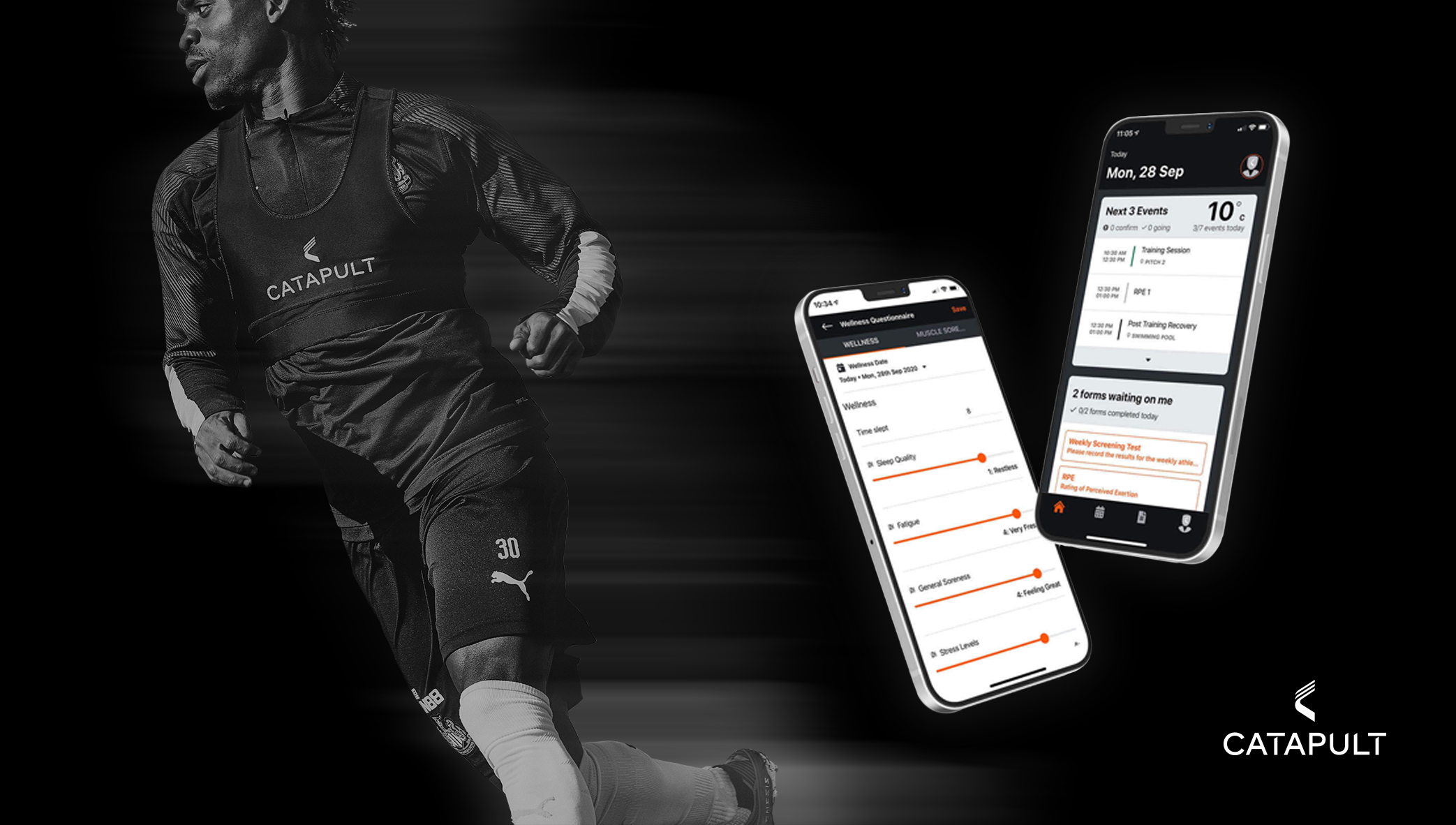Athlete Management Guide: 5 Steps to Success
Introduction to Athlete Management
Data has become an invaluable resource in modern sports. For teams looking to gain a competitive edge, access to objective data is essential for making informed decisions that drive performance. However, as clubs handle increasingly large volumes of data, the complexity of managing, analyzing, and sharing insights can become a barrier. This is where an Athlete Management System (AMS) and Athlete Management Software come into play, helping teams streamline and optimize this information flow.
Athlete management involves much more than just data handling. It also encompasses the holistic care and development of an athlete’s career, health, and well-being. This includes training load monitoring, injury prevention, nutrition, mental health, and career planning. By effectively managing these elements, teams can support athletes in achieving peak performance while maintaining a healthy, sustainable career.
Athlete management encompasses not just the handling of this data, but also the holistic oversight of an athlete’s career, health, and development. It involves integrating data-driven insights with traditional methods of athlete care and development.

What is Athlete Management?
Athlete Management is a comprehensive approach to overseeing the development, health, and career of an athlete. This field integrates both data-driven insights and traditional sports care methods to create a balanced and effective approach to athlete support.
Key elements of athlete management include:
- Data Collection and Analysis: Using objective data to assess training, performance, and health metrics.
- Injury Prevention and Recovery: Monitoring load and wellness data to reduce injury risk and optimize recovery.
- Nutritional and Mental Health Support: Incorporating guidance that supports physical and mental wellness.
- Career Planning and Personal Development: Aligning training and development goals with long-term career success.
An Athlete Management System or Athlete Management Software centralizes these processes, allowing teams to gather, analyze, and share key insights efficiently. With AMS, clubs can establish a streamlined and effective Athlete Management approach that boosts both team and athlete performance.
The goal of athlete management is to create an environment where athletes can achieve peak performance while minimizing risks and fostering long-term career sustainability.
Athlete management technologies
Athlete management technologies are designed to improve the way insights are understood, shared and implemented. As such, they help teams to streamline processes and ultimately make better decisions.
Helping you to get your athlete management up to speed, this blog article outlines five basic areas that all teams should consider when attempting to improve the administration and communication of data.
If you’re new to athlete management, we hope you find this article helpful as you get used to the task and start to build new functions within your club. If you’re more experienced, hopefully, it acts as a bit of a refresher or even a reminder of just how far you’ve come!
—> Download our free eBook: 5 Steps to Success with Athlete Management

Step 1: Align staff and Departments with Athlete Management Systems
A primary motivation for investing in Athlete Management Systems is to break down silos, enabling staff to communicate effectively and work from consistent datasets. With data flowing from diverse sources, such as sports science, performance analysis, and medical operations, achieving alignment across departments can be challenging yet crucial for cohesive athlete management.
A major benefit of an athlete management system is its capacity to make organisational alignment and One of the significant advantages of Athlete Management Software is its capacity to centralize and streamline data, fostering organizational alignment and ensuring data consistency. By consolidating information on a single platform, teams encourage transparency, allowing staff members visibility into relevant data essential for their roles. This centralization minimizes data loss and ensures that each department operates from the same information foundation.

Case Study: Baylor University
Baylor University exemplifies how a robust Athlete Management System can drive departmental alignment. “Catapult is the piece that brings together the vast range of innovative technologies we use across all 19 of our NCAA sports programs,” says Kenny Boyd, Senior Associate Director for Student-Athlete Health and Wellness. “The ability to have all our data, information, and planning tools in one platform means we can better understand and manage our student-athlete health and wellness insights.” With the help of an AMS, Baylor can improve communication and transparency across departments, enhancing collaboration and decision-making.
This alignment can also be supported by adopting clear communication methods. An Athlete Management System provides integrated messaging, calendars, and alerts that allow staff to stay updated on key information. By implementing these features, teams can promote open communication, ensuring all stakeholders stay on the same page and fostering a collaborative environment that improves the sharing and application of data.
Using Athlete Management Software like Catapult, teams can achieve alignment that supports athletic performance, health, and overall team efficiency.
—> Download our free eBook: 5 Steps to Success with Athlete Management

Step 2: Generate Athlete Buy-in for Athlete Management
Securing athlete buy-in is essential to the success of any Athlete Management System. Without active participation and understanding from the athletes themselves, even the most advanced Athlete Management Software will not reach its full potential. Establishing a strategy for engaging players with these systems is crucial to ensure they are invested in the process and motivated to contribute.
Involving Athletes in the Data Collection Process
Fortunately, there are numerous ways to engage athletes effectively. For instance, Athlete Management Systems allows players to submit their own wellness and Rate of Perceived Exertion (RPE) scores through a mobile app. This not only streamlines data collection but also empowers athletes by making them active participants in the monitoring and analysis process. By engaging athletes in this way, they develop a stronger sense of ownership, leading to increased interest and cooperation. This involvement creates opportunities to further educate them on the importance of data collection and how it benefits their performance and overall well-being.
Centralizing Communication for Better Athlete Engagement
Another way to foster athlete buy-in is by centralizing communication within the Athlete Management System. Effective Athlete Management relies on seamless information sharing, and modern systems provide messaging functionalities across mobile and tablet platforms. This allows you to communicate insights, updates, and feedback directly to players through devices they are comfortable using, making it easier for them to engage with the data and understand its relevance to their performance.
Making Athlete Management Systems User-Friendly
By making the athlete management process user-friendly and accessible, you encourage positive habits that support both engagement and efficiency. This not only improves data consistency but also fosters a collaborative environment where athletes feel more aligned with team goals.
The Importance of Athlete Buy-in for Long-Term Success
Ultimately, the effectiveness of your Athlete Management efforts depends significantly on the level of buy-in from your squad. Taking the time to develop strategies for engaging and involving athletes in these processes will pay off in the long run, ensuring they see the value and actively participate in the system you’ve put in place.
—> Download our free eBook: 5 Steps to Success with Athlete Management

Step 3: Automate Workflows with Athlete Management Systems
The team sports environment is often time-constrained, with staff needing to complete technical, labor-intensive tasks quickly. Analysts and sports scientists frequently mention that a significant amount of their time is spent on repetitive tasks, reducing the opportunity to focus on the insights that could genuinely impact performance. This is where Athlete Management Systems can be transformative, enabling workflow automation to save time and streamline processes.
Reducing Manual Tasks Through Workflow Automation
One of the primary benefits of implementing an Athlete Management System is the ability to automate repetitive tasks, allowing staff to focus on high-value activities. By automating reporting, data integration, and even empowering athletes to input their own wellness data, Athlete Management System can save hours and free up resources. With fewer menial tasks, staff have more time to analyze data, communicate insights, and make meaningful contributions to team performance.

Case Study: Melbourne United’s Efficiency Gains with AMS
Teams across various sports have already seen how automation can enhance organizational efficiency. For example, the 2018 National Basketball League champions Melbourne United noticed significant improvements in their internal processes after adopting Catapult’s Athlete Management Systems.
“In elite sport, anything that can save time is worth its weight in gold,” says the High Performance Manager at Melbourne United. “To have our wearable data sync directly into Catapult’s system without needing to import or export CSV files was a huge benefit. Bringing all the team’s data into one place allows me to be more efficient with my time.”
Streamlining Data Collection and Analysis
As the volume of data grows, the ability to streamline workflows and automate tasks becomes increasingly crucial. By consolidating data through Athlete Management Software, teams can reduce the time spent on manual data handling, which ensures faster access to insights that drive performance. No matter the scale of your athlete management setup, even small improvements to process efficiency can yield significant benefits.
Maximizing Efficiency with Athlete Management Systems
As you collect and analyze more information, an automated Athlete Management System will help keep processes organized, enabling real-time decision-making. By improving the efficiency of workflows, teams can enhance both the application and communication of key insights, ultimately driving better performance on and off the field.
—> Download our free eBook: 5 Steps to Success with Athlete Management

Step 4: Establish a Clear Scientific Process for Athlete Management
Tools for improving Athlete Management and performance monitoring are only as effective as the processes that support them. Without a structured and scientific approach, even the most advanced Athlete Management System will have limited impact. For Athlete Management Software to truly benefit an organization, it must be implemented within a coherent scientific process that guides measurement, analysis, learning, and improvement.
A clear scientific process ensures consistency and enables teams to make data-driven decisions that positively impact athlete performance and well-being. Here’s a breakdown of the essential stages for building an effective athlete management workflow:
1. Measure Athletes
The first step is to determine the metrics you want to monitor, such as physical performance, health, and wellness indicators. Setting clear parameters ensures that the Athlete Management System collects relevant data. Then, develop a workflow to measure and communicate these metrics consistently across departments. This initial step provides a reliable foundation for monitoring athlete performance and health on an ongoing basis.
2. Analyze Athlete Data
Once data is collected, it’s crucial to decide on the best platforms and processes for storing and analyzing it. An effective Athlete Management Software centralizes data, making it accessible for analysis by different departments. Establishing a standardized process for data analysis fosters consistency, ensuring that insights are interpreted and acted upon in a cohesive manner. This step helps to maximize the value of the data and enables deeper understanding of athlete trends and performance.
3. Learn from Your Data
Data analysis is only valuable if it leads to actionable insights. Developing a plan for sharing, understanding, and acting on insights across departments is essential for learning from the data. Effective Athlete Management involves mapping out how key findings will be communicated to stakeholders—whether it’s coaches, sports scientists, or the athletes themselves. By fostering a culture of learning, teams can continually adapt and enhance their approach based on real-world insights.
4. Improve Athlete Performance
The final step is to use the insights gained to make informed improvements in training, recovery, and overall athlete support. With a data-driven process guiding decisions, teams can focus on the areas that will have the biggest impact. Whether it’s adjusting training loads, refining recovery protocols, or modifying nutrition plans, allowing data to guide these decisions ensures objective and effective Athlete Management.
By building a robust framework around these four stages, organizations set the foundation for an Athlete Management System to create measurable positive outcomes. A structured, scientific approach maximizes the benefits of Athlete Management Software, supporting both athletic performance and the health of the organization as a whole.
—> Download our free eBook: 5 Steps to Success with Athlete Management
Step 5: Avoid the Reductionist Trap in Athlete Management
In organizations that face challenges with siloed information and poor communication, there’s often a tendency towards reductionism—viewing athlete performance through a narrow, specialized lens without considering the full picture. In Athlete Management, this reductionist approach can lead to missed connections and incomplete insights, ultimately hindering performance and well-being.
Understanding Reductionism in Sports Science
In the context of sports science, reductionism manifests when different departments work in isolation, focusing solely on their area of expertise without cross-referencing critical data. For instance, performance analysts may not have access to medical records, and the medical team might not see the full spectrum of performance metrics. Without a comprehensive view of an athlete’s health history, training loads, and performance data, decisions are often made in a vacuum, increasing the risk of mismanagement.
How Athlete Management Systems Prevent Reductionism
Athlete Management Systems are designed to prevent this fragmented approach by promoting informational transparency and fostering inter-departmental communication. By integrating performance, medical, and wellness data, an Athlete Management System allows staff to take a holistic view of each athlete’s profile, ensuring that decisions are informed by all relevant factors.

Case Study: Gold Coast Titans’ Holistic Approach
The National Rugby League (NRL) team, the Gold Coast Titans, demonstrates how a well-implemented Athlete Management System can counteract reductionism. The Titans use Catapult’s AMS to enhance oversight and communication surrounding injury management and performance. By mapping injury histories and understanding risk factors at individual, positional, and team levels, the Titans maintain a comprehensive view of athlete health.
“The medical reporting feature has been great as it has enabled us to gain insight into our injuries and understand how they have occurred and to what parts of the body,” says Adam Russell, Former Head Physiotherapist at the Titans. “This allows us to have good discussions with both training and coaching staff to help reduce injury risk.”
Embracing Complexity for Better Decision-Making
When investing in Athlete Management Software, it’s vital to embrace complexity rather than oversimplifying. A holistic approach allows staff to make more informed decisions, optimizing athlete performance and health. By giving all staff access to relevant data and avoiding reductionist thinking, teams can achieve a nuanced understanding of each athlete’s needs.
As Russell L. Ackoff, a pioneer in systems thinking, once said, “The search for simple—if not simple-minded—solutions to complex problems is a consequence of the inability to deal effectively with complexity.” By utilizing an Athlete Management System to embrace a comprehensive view, organizations can maximize the benefits of their investment, positively impacting performance on and off the field in the long run.